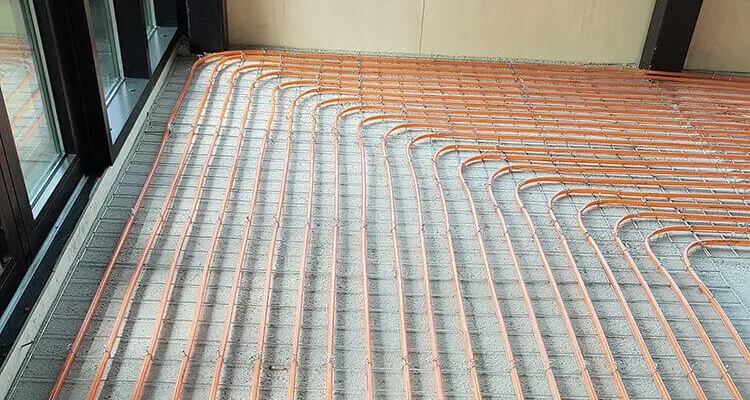As the winter arrives, it becomes necessary to maintain indoor temperature. An underfloor heating system is one of the methods of maintaining indoor temperature in the chilling winters. You can either take help from a professional or install it yourself.
So, without further dues, let’s read further to get detailed knowledge about the underfloor heating system!
What is Underfloor Heating?
An underfloor heating system provides comfort in the chilling winters by maintaining indoor temperature. It circulates the warmth with the help of hydronic and electrical elements installed under the flooring. A properly installed underfloor heating system provides an even distribution of heat all over the room.
In winters, the floor is the coldest place which makes it hard to walk barefoot on the floor. Here comes an underfloor heating system that helps in solving this problem. An underfloor heating system has many advantages, but before installing it, you need to have in-depth knowledge about it.
Types of Underfloor Heating
There are two types of underfloor heating systems i.e., electric underfloor heating system and water underfloor heating system. Choosing the right underfloor heating system depends on your preference because both these systems serve the same purpose with equal effectiveness.
Electric System Underfloor Heating
It consists of a complete network of heating elements like wires, cables, coils, mats, etc. These elements are installed under the flooring to maintain the temperature. It is relatively easy to install and requires minimum floor heights.
There are four types of electric system underfloor heating:
- Loose Cable System
- Inscreed System
- Foil Heating Mat System
- Heating Mats (100W, 150W, 200W)
You can use different elements for various floorings like:
- A loose cable system, inscreed system, and 100-200W heating mats are compatible with tile flooring.
- Foil heating mat systems are great for wooden flooring.
- 150W heating mats and foil heating mat systems with a heat pack are suitable for carpet floors.
- Vinyl flooring is compatible with all four systems.
Water System Underfloor Heating
In water system underfloor heating, water is mixed with heat transfer fluid like propylene glycol, and this mixture is circulated from all over the floor to the boiler or vice versa. Water systems are cheaper to install, and they provide an added advantage of circulating the warmth in multiple rooms at once. Installing the water system underfloor heating system can prove to be cost-effective and efficient for new buildings with large areas.
Pros & Cons of Underfloor Heating
An underfloor heating system is associated with certain disadvantages and advantages. Some of the pros and cons of the underfloor heating systems are given below:
Pros
- An underfloor heating system is better for providing comfort in the chilling winter season. It maintains even room temperature.
- It is a very effective and efficient way of maintaining room temperature.
- It is safe for kids to play here and there in the room.
- It is easy to use, and some underfloor heating kits are also available with the self-installation feature.
Cons
- Underfloor heating is expensive. The selection of the right flooring that is compatible with the kit is also very tricky and costly.
- You need highly-qualified and experienced electricians for the proper installation of a water system underfloor heating kit.
Proper Use of Underfloor Heating to Reduce the Cost of Bills
Apart from the initial installation cost, underfloor heating also increases your electricity bills to a large extent. Proper use of these appliances is necessary to reduce the cost of bills. When you are spending a large amount of money on the installation, it would be ideal to invest a small amount in purchasing a thermostat.
You can conveniently operate a smart thermostat with your mobile phones to maintain the temperature of different rooms. Its usage can help you decrease around 25% of the cost of electricity bills.
Underfloor Heating Compatibility with Different Floors
Different types of heating systems are compatible with various floorings. While opting for an underfloor heating system you need to keep in mind the type of flooring that you are going to use for your house.
An underfloor heating system is highly compatible with hard floors like tiles and stones. It works well with vinyl floors and concrete floors as they are good conductors of heat. But there are some flooring like solid wood, and some types are carpets that are not good for underfloor heating systems.
Conclusion
At last, we would like to conclude that the success of underfloor heating systems mainly depends on the quality of the kit. But you must ensure the use of the right flooring for better results. You should take assistance from the professionals for proper installation. Prefer the supplier that offers good design and quality along with proper aftercare services.
We hope that you found the article informative. Share your thoughts!













[…] techniques will also vary if you have other considerations like underfloor heating, in which case it may be best to ask for expert advice on how to deal with the […]